“Agility has a lot to do with doing: trying things out and learning from them.” Christoph Frei
Shortly after our exciting conversation with Marianne Masson-Delcombel, head of an agile learning center in France, we crossed the borders again to Switzerland to talk to Christoph Frei.
As an “Agile Coach”, Christoph Frei is a long-standing expert in agile forms of collaboration. Since 2019, he is a partner of the innovation factory Creaholic in Biel/Bienne, Switzerland. He has successfully designed and delivered numerous trainings around agile ways of working. Previously, he worked as a product owner as well as a scrum master.
Together with the consultant for school and teaching development Frido Koch, Christoph Frei has published the card sets “Schulen agil entwickeln” (“Developing Schools Agilely”) as well as “Agiles Lernen an Schulen” (“Agile Learning at Schools”) (both 2021, Beltz Verlag) and trains and accompanies teachers in German-speaking countries.
Christoph, how did you come to the topic of agility?
I worked at the largest Swiss telecom company and one of the first large companies in Europe to introduce the Design Thinking approach, methods and mindset on a large scale. There was a lot of transformation. I was on the Design Thinking team as a facilitator and was able to build contacts throughout the company. Before that, I was responsible for building an innovation platform. Through these roles, I came into contact with a lot of people. Among them were some who were working agile and wanted to spread this further in the company. We got together and said to each other, “Let’s have a guild to discuss the issues around agile ways of working and thus discuss agile company-wide!” It was also the time when the book “Reinventing Organizations” by Frédéric Laloux was published and also led to a lot of change in our company. Every time we met in the Agile Guild, there were new topics, inputs, books, new methods and much more on the topic. Overall, it was a very inspiring time in this company, where we were able to move and change a lot and I was always in contact with people from various departments.
How did you connect agile thinking to education?
The bridge to the school came about through an exchange with an acquaintance. Frido Koch was the principal and had started a pilot of “learning landscapes” together with a team of teachers: several secondary classes were grouped together to allow much more individual interaction with the learners by means of less frontal teaching. In the exchange we quickly noticed that the new setup brought many changes for the pedagogical team in terms of their collaboration and we suspected that the team could benefit from agile forms of collaboration.
When this pilot was extended to the whole school after three very successful years, the moment was right: I was able to conduct a one-day training with the whole pedagogical team as well as the school management, about 80 people. I was able to introduce them to the magic of Kanban boards, then the pedagogical teams around the learning landscapes as well as the school management worked out their Kanban boards. They also worked with team charters, discussed roles of scrum teams and more from the agile world. After three months we organized a kind of retrospective, where the educational teams as well as the school management showed each other in a kind of marketplace what they had now applied and what it had achieved. It turned out that a lot of things had worked very well. The agile ways of working that had been introduced at this school were so well received that we thought, “we’d like to take that further.” So we designed a training and have since conducted it with many school administrators and teachers. In each case with me as the facilitator with “agility experience” from the business world and Frido Koch as a long-standing expert from the world of education, who adapted the content to the school context. Today, Frido Koch is active as a school consultant for IQES throughout the German-speaking world.
How did the teachers react to your offer?
I think it is very similar to other contexts – we can see the innovation adoption curve well in each case. There are few “early adopters.” These are the ones who have always been trying new things. These individuals are not fixated on agility, but simply on new things. Then there are the “early” as well as the “late” majority. These individuals are observing first, and may try new ways of working. And then there are the “laggards” – we will not be able to convince them of a team setup and other ways of working together, they prefer to continue teaching alone in front of “their” class. It must be said that it is often difficult to know how much is already happening and being tried out in the classroom by teachers, who may not use the terms from the agility world!
Now back to the creation of the card sets…
Exactly… We had the content from the trainings we had been holding for years now. Then my entrepreneurial side came out and I suggested to Frido that we should publish the content – to be able to reach even more people from the school world. We put our idea into a concept and submitted it to Beltz Verlag – and the publisher was thrilled!
Why did you actually decide on a card set and not a book?
There are already many publications in book form on the topic of “agility”. You find a lot of theory about Scrum, the emergence of agile working methods, etc. However, people from the school sector asked us again and again: “Ok, I have read a book on agility. But how am I going to implement it concretely in the classroom?” For me, agile has a lot to do with doing (trying it out and learning from it), so less to do with theory and thinking about it for a long time. So we set ourselves the design challenge to develop something that school administrators as well as teachers can use to discover and immediately apply topics around agile ways of working. That’s why we chose the format of the card set. Because it should stimulate the spirit of discovery, the users should quickly get into the application – thus not having to read a book from front to back to feel ready to try something. For example, if you are a school leader and would like to try a new meeting format, you can look through the cards from the “agile meeting places” section, get inspired, and choose one for direct application. We have kept all of the descriptions very short; “Kanban”, for example, a very large topic, is summarized on two cards.
The positive feedback to the card sets from teachers as well as teaching staff show us again and again that we seem to have found a good way and thus offer many people from the school sector an introduction to agile ways of working that is very easy to use.
Can you imagine having the card set translated into other languages?
In principle, yes, but such a project takes time. You have to find a publisher, which can be a challenge depending on the country, since the school systems in France or England, for example, are organized differently than in Germany or Switzerland. In addition, such a project would be “doubly new” for some publishers: Many publishers in the school sector are neither familiar with the topic of “agility” nor with the card set format. We are on the topic of translations and who knows…
Are you interested in being informed about the project “Agile4Collaboration” in the future and giving us feedback on our manual “Self-Directed Education for Resilient and Inclusive Collaboration”?
Yes, absolutely! There are several publications working to spread the word, but there are few collaborative projects like “Agile4Collaboration”.
There is a lot happening in terms of agile ways of working in schools. We are happy to see new material emerging through your project and to see the exchange moving forward. My experience has shown me how important exchange formats are. This is probably the best way to get people excited about agile working in schools: By connecting them to each other.
Thank you very much, Christoph, for your time and the exciting story of the creation of the card set “Developing Schools Agile”, a great tool that we highly recommend!
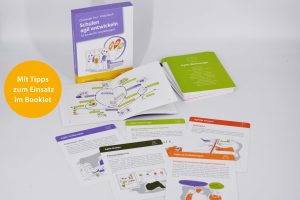
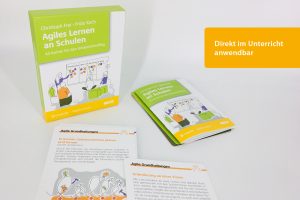
As we mentioned when we introduced Agile School 66, we are not the only ones who are passionate about the topic of agility in schools. For more information, see Christoph Frei in the podcast “Why it needs more agility in schools” (Agile Amped ASG) – in German.





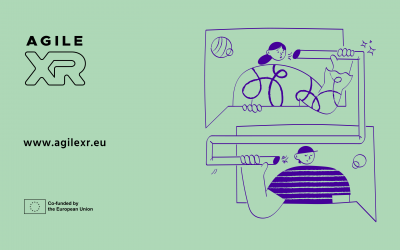
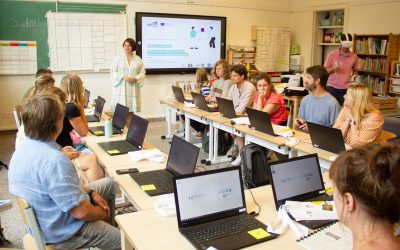

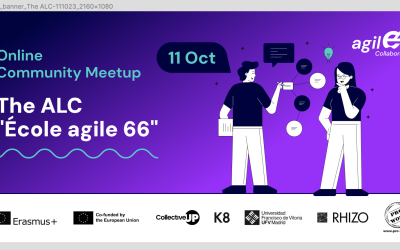


0 Comments